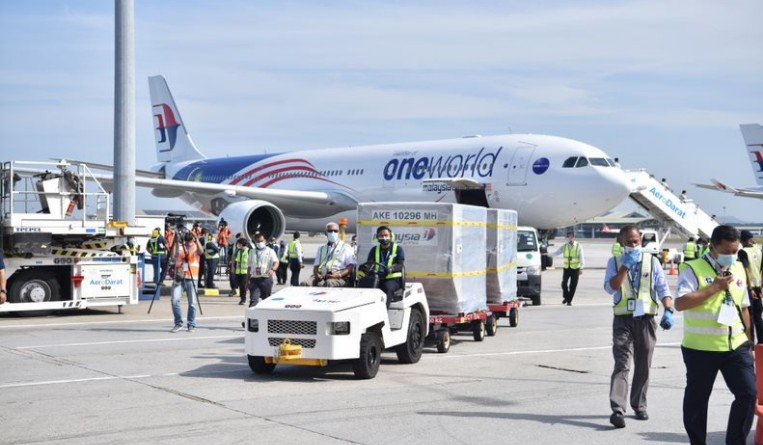Get ready for the vaccine – and for the big challenges it will bring to the air cargo sector – was the theme of two recent webinars.
The frankest exposition of the scale and complexity of the challenge was made by Victor Soh, the Singapore-based director, global distribution, and logistics strategy lead for pharmaceutical company Merck Sharp & Dohme, said during an IATA webinar.
The biggest problem, he said, is capacity, although moving a yet undiscovered vaccine through multiple channels runs close. “The industry will rely mainly on road and air for transportation and this will increase the competition for limited and volatile capacity for cold chain,” said Soh.
Make no doubt about it: this is going to be bigger and more complex than the launch of any Apple product.
One big difference is temperature. Temperature excursions are “probably the most important factor to avoid,” Emir Pineda, board member and lead of The International Air Cargo Association’s (TIACA) Sunrays Project, which is tasked with getting the industry ready for the distribution, said during a TIACA webinar.
For a vaccine that needs to be stored at not just chilled, but super-chilled, temperatures – Soh mentioned temperatures as low as -80°C, although it can go even lower, with deep freezing at -150°C – two problems occur.
One is the demand for dry ice – already looking to be a recurring concern, and something which could increase the number of flights needed to carry the vaccine, as the number of pallets each flight can carry will be restricted by the amount of dry ice needed.
The base line here is already high: A single dose for each of the worlds’ 7.8 billion people will require 8,000 Boeing 747 flights, as Glynn Hughes, director general at TIACA, famously pointed out. The heavy use of dry ice only increases the number of flights needed.
The second is the sheer lack of such specialized facilities already. “The challenge is even greater for ultra-frozen,” said Soh.
While the problem can be eased by some immediate reforms such as building re-icing capability, the needs of a cold supply chain lab to consumer mean “it will take months to ramp up these capabilities,” said Soh.
The best summary of the problem, though, came from the TIACA webinar: “Investment is needed in cold chain, monitoring, training and in limited time,” said Nathan de Valck, head of cargo product and network development at Brussels Airport and chair of Pharma.Aero.
Another big question mark is the software. Customs clearance is often lengthy, as Soh said, mentioning basic and indeed everyday problems such as lack of staff, poor coordination and sometimes lengthy border tests. Also in this bracket: artwork variations of stock-keeping units (SKUs), which are a major barrier to redeployment, Soh added.
This means doing in weeks and months what the industry has long been battling, though Soh notes that the opportunities presented for the industry if this happens is immense. “If we can streamline and simplify it will definitely ease the flow of the Covid-19 vaccine,” he said.
The need to allocate vaccine correctly could just be the start of a huge, multifaceted operation, as several types of vaccines from different companies are moved through, across and even back down a supply chain going at full-speed, potentially as it is still being built, all while taking care to make the system scalable, sustainable and not disrupting existing supply chains.
Luckily some solutions exist, including collaboration. “Everybody that is involved in the logistical supply chain will need to come together in the next couple of months said Hughes.
The airports for their part are already getting there. The need to move vast amounts of PPE (personal protective equipment) quickly at the start of the pandemic has given them some experience in what is coming. “We will leverage off PPE work,” Joachim von Winning, executive director of the Air Cargo Community at Frankfurt said.
What is instructive is the need of the industry to do a whole heap more preparation.
Pineda reported just under half, or 49%, of supply chain companies have said they will make moves, although 42% are still at the “may” stage. Initiatives underway include 24/7 dedicated teams, airside thermal protection and guaranteed insurance.
Just over a third, or 36%, will invest in either new physical or digital infrastructure, with only a few more (41%) saying they may. This hints at how much there is still to do. “We are still in the early stages of industry preparations,” said Pineda.
Michael Mackey



